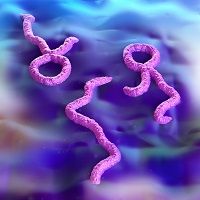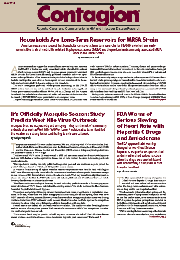Ebola Present in Eyes Even After Blood Test Clears Patient
Research has shown that Ebola virus disease (EVD) not only has the power to survive on plastic surfaces and spread through sexual transmission, the disease has also proven to last in another place.

Researchers from Emory University and the Centers for Disease Control and Prevention (CDC) examined an EVD survivor who is also an infectious disease physician, Ian Crozier, MD. Traces of the disease were found in the clear fluid in front of his eye, called aqueous humor, even 10 weeks after a blood test showed that it was no longer present in his system. Crozier developed severe uveitis, a condition that could lead to vision loss, after he recovered from EVD.
“The presence of viable Ebola virus in the eye could mean that other Ebola survivors may also be at risk for the development of uveitis,” one of the authors Stephen Yeh, MD, said in a news release.
Crozier, age 43, was diagnosed with EVD on September 6, 2014 while working with patients in Sierra Leone. He returned to the US in critical condition where he was treated at Emory University Hospital.
One month after the uveitis determination — which was 14 weeks after the EVD diagnosis – Crozier suffered from pain, redness, photophobia, and blurred vision with halos in his left eye. The patient’s visual acuity, which had been 20/15 (with glasses) in November, decreased to 20/60 just 5 days after the symptoms began. Crozier’s condition began to improve over the next 72 hours, however, the vitritis continued to get worse which brought the visual acuity in his left eye to 20/400.
Three months after the uveitis diagnosis, the patient’s visual acuity improved significantly to 20/15 and still continues follow-ups.
Previous research showed that out of 85 EVD survivors in Sierra Leone, 40% of them had eye complications, among others, during recovery.
“The thousands of Ebola survivors in West Africa and health care workers in their home countries will need to be monitored for eye disease in the post-Ebola period,” Yeh advised.
Documented in the New England Journal of Medicine, the findings may only concentrate on one individual but they give insight to potential issues in other EVD patients. It certainly shows the complexity of Ebola even after a recovery is determined.
“Further studies are needed to assess the persistence of EVD during convalescence, to elucidate the mechanisms underlying this persistence in ocular and other immune-privileged tissue sites,” the study concluded.

